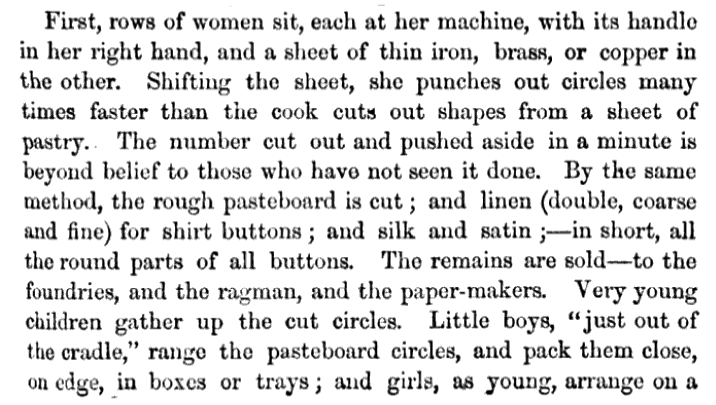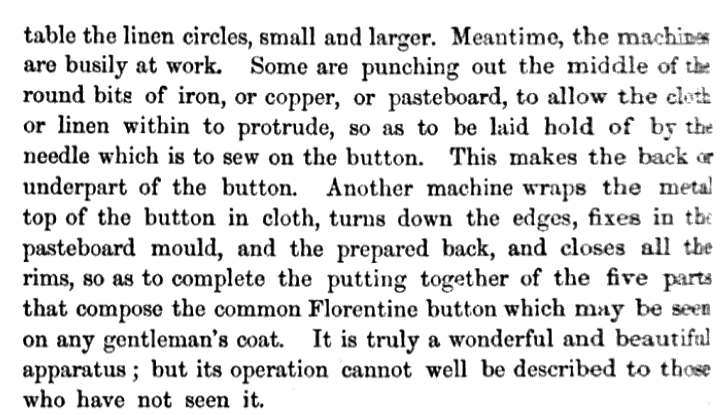Florentine Buttons
Florentine buttons were fashionable in the 19th century. According to the The Illustrated London News in 1851 they were first made in Birmingham in 1820, and were named for the type of fabric used to cover them. It is also claimed that they were named by Mr Joshua Brough, a silk manufacturer, for buttons covered in a drab silk cloth mounted on moulds of wood, bone, or else iron moulds with linen backs. In the early part of the 19th century several hundreds of women and children in the villages surrounding Leek produced large quantities of Florentine buttons. The name came to be used for mass produced covered buttons, involving both machinery and hand labour. Button maker William Ashton of Birmingham showed examples at the Great Exhibition of 1851. They were advertised for sale in Australia as late as 1895.
Here is a summary of a 1835 patent for improved Florentine and/or covered buttons:

The 1855 “Cyclopedia of Useful Arts” describes then thus: “The Florentine and silk buttons have now nearly superseded the gilt button manufacture. These contain each two circular bits of iron, a piece of thick pasteboard, another of canvas, and the outer silk or Florentine covering. All these are cut out by stamping presses. The sheet of iron, of paper, of canvas, or of Florentine, is shifted gradually till it is nearly all cut up into little discs.”
An 1861 description of buttons made in Ashton says “Florentine buttons, consisting of wood, bone, or iron moulds, covered with worsted stuff, are also manufactured here, and give employment to many hundreds of women and children in the surrounding villages, who are employed in sewing the cloth on the moulds.”
A good description of their manufacture is found in the 1861 book “Health, Husbandry, and Handicraft” by Harriet Martineau on pages 541-2.


If you wish to read the whole chapter on buttons from this book, go to
https://play.google.com/books/reader?id=qOtU7Zk8VGQC&pg=GBS.PA535&hl=en
For all comments and queries, please use the contact page.
